An Adventure Capitalist’s Notes on Thailand
Tokyo Envy
Flying into Bangkok from Sri Lanka, we alighted from the plane and promptly began searching for food in the airport. The most obvious choice  seemed to be a ramen restaurant, which appeared fast, easy, and relative to airport food, reasonably priced.
Odd, I thought, sitting down, that our first meal in Thailand wasn’t the world famous Tom Yum Khaa or Green Curry we had been dreaming of. Watching people pass in the airport as I dined on these noodles, it seemed there was more of Japan in Thailand than just the food. Â Clothing worn by the glitzy airport patrons brought me back to my time in Tokyo. The emphasis on and intensity of cosmetics on the light faces of women passing by matched Japanese standards of beauty and public presence. Â All around the airport, customs officials and idle waitresses read Manga translated from the Japanese. Throughout Thailand we found that 7-11 (owned by Japanese Seven & I Holdings) does a brisk business, with over 5000 locations in the country, despite pricing goods at a premium over family-owned bodegas.
The aesthetic experience of Japan has permeated Thailand and become a point of desire held by a large class of consumers. Food packages, media design, retail experiences, and public transportation feature Japanese-style iconography.
 These designs are characterized by simple geometric shapes to communicate meaning (such as flavor, function, or usage directions), anime-style illustrations, cartoon characters, and often Japanese writing, as if to suggest their progenitors or intended export destination. Japan, as a tourist destination, commands much attention among the Thai. Bangkok itself even has a surprisingly high number of Japanese expatriates, complete with associated neighborhoods of book shops, restaurant-filled streets, and cafes.
These designs are characterized by simple geometric shapes to communicate meaning (such as flavor, function, or usage directions), anime-style illustrations, cartoon characters, and often Japanese writing, as if to suggest their progenitors or intended export destination. Japan, as a tourist destination, commands much attention among the Thai. Bangkok itself even has a surprisingly high number of Japanese expatriates, complete with associated neighborhoods of book shops, restaurant-filled streets, and cafes.
Korean cultural artifacts also have been in high demand among Thai consumers. While not as present in packaging and products, the K-Wave has swept across Thailand in the form of pop music, film, and fashion that has made Korea the new “cool” for Thailand. This wave of Korean and Japanese influence is especially interesting, as it can be considered to be unseating the U.S. and Europe as the cultural producers whose styles and products are interpreted and consumed in developing Asia. As Thailand looks to Japan and Korea as trading partners, tourist destinations, and marks of high quality products, what are the implications for the future?
Overseas Chinese Entrepreneurship
 Bangkok’s business community seemed to be the most pronounced example of a phenomenon we experienced in Indonesia, Malaysia, and Singapore: Overseas Chinese entrepreneurship. In Thailand it came as a surprise to discover Chinese heritage, as the vast majority of overseas Chinese business families in Bangkok had migrated long enough ago to adopt Thai surnames. The name Bangkok itself was given by Chinese traders who populated it as a port city before it became the nation’s capital. Vast numbers of Hakka, Fujian, Chaozhou, and Cantonese people settled in the metropolis to found manufacturing companies and create a financial infrastructure to support them. These Chinese now represent an engine of growth in the Thai economy, both producing manufactured goods that make up the bulk of Thailand’s exports, as well as driving growth in Bangkok’s upmarket institutions that firmly place it in the category of “world class city” as it would like to be defined. How far do these Chinese bonds go? Will they facilitate trade and partnership in the new wave of Chinese foreign investment in infrastructure and industry that has occurred over the last three years? Â The sheer quantity of Thai-Chinese business families will no doubt make it a space to watch.
Bangkok’s business community seemed to be the most pronounced example of a phenomenon we experienced in Indonesia, Malaysia, and Singapore: Overseas Chinese entrepreneurship. In Thailand it came as a surprise to discover Chinese heritage, as the vast majority of overseas Chinese business families in Bangkok had migrated long enough ago to adopt Thai surnames. The name Bangkok itself was given by Chinese traders who populated it as a port city before it became the nation’s capital. Vast numbers of Hakka, Fujian, Chaozhou, and Cantonese people settled in the metropolis to found manufacturing companies and create a financial infrastructure to support them. These Chinese now represent an engine of growth in the Thai economy, both producing manufactured goods that make up the bulk of Thailand’s exports, as well as driving growth in Bangkok’s upmarket institutions that firmly place it in the category of “world class city” as it would like to be defined. How far do these Chinese bonds go? Will they facilitate trade and partnership in the new wave of Chinese foreign investment in infrastructure and industry that has occurred over the last three years? Â The sheer quantity of Thai-Chinese business families will no doubt make it a space to watch.
People’s Hero
AsiaWheeling visited Bangkok at a time of political upheaval, experiencing street demonstrations and all night speeches projected onto giant screens near a democracy monument. Hundreds of thousands of farmers and fishermen from rural areas came to rally, spill their blood, erect bamboo barriers, and demand elections be held. On the surface, this movement for democracy, against corruption, and against urban favoritism is one of altruism, making it easily encouraged by outsiders’ encouragement. The individual nearly deified on these red shirts is Thaksin Shinawatra, the former Thai Prime Minister who held office from 2001 to 2006. While the protesters demand new elections for a number of candidates, the understanding is that this will allow Thaksin to be re-elected.
 Why should the Red Shirts favor Thaksin, other than the fact that he may be monetarily compensating both the leaders of the movement and the commoners for participating in the rallies? He’s a billionaire businessman and Thai Chinese (see above) who represents the elite old guard, who, one would assume, is out of touch with the needs of plebeians. However, during his time at the helm, Thaksin discovered the key to growing his popularity in terms of sheer number of supporters was to satisfy the rural poor. To achieve mass appeal, he instituted the “30 Baht per visit” healthcare policy, allowing Thai nationals to pay only 30 Baht ($0.90) per clinical visit and receive medical treatment at no additional cost. Additionally, he instated rural credit expansion programs, allowing individuals to borrow against their future incomes at very low interest rates, essentially nationalizing the payday loan industry.  Thaksin  legislated direct injections of cash into village development funds, and instated the “One Tambon One Product” stimulus program that identifies superior goods in each sub-district and formally provides these products with marketing exposure on the national level.
Why should the Red Shirts favor Thaksin, other than the fact that he may be monetarily compensating both the leaders of the movement and the commoners for participating in the rallies? He’s a billionaire businessman and Thai Chinese (see above) who represents the elite old guard, who, one would assume, is out of touch with the needs of plebeians. However, during his time at the helm, Thaksin discovered the key to growing his popularity in terms of sheer number of supporters was to satisfy the rural poor. To achieve mass appeal, he instituted the “30 Baht per visit” healthcare policy, allowing Thai nationals to pay only 30 Baht ($0.90) per clinical visit and receive medical treatment at no additional cost. Additionally, he instated rural credit expansion programs, allowing individuals to borrow against their future incomes at very low interest rates, essentially nationalizing the payday loan industry.  Thaksin  legislated direct injections of cash into village development funds, and instated the “One Tambon One Product” stimulus program that identifies superior goods in each sub-district and formally provides these products with marketing exposure on the national level.
However, something about Thaksin’s behavior doesn’t align with the Red Shirts’ cries to end government corruption. He has been accused of selling strategically valuable national assets to foreign governments, as well as for exhibiting illegal and nepotistic sales of Bangkok real estate to his family members. Now jet-setting around the world, Thaksin operates the Red Shirt puppet show in Bangkok from stopovers in Dubai, Moscow, Brunei, and London.
Before he was a politician, Thaksin was simultaneously a police officer and businessman who experimented with a number of failed ventures including a silk shop, a movie theater, an apartment building, public bus radio services, and security systems, which left him over 50 million baht in debt. Finally, with the help of his police connections, he founded Advanced Information Services (AIS), nominally a computer rental business, but one that went on to capitalize on mobile phone growth in Thailand just as the sector was beginning. Started in 1990, the firm gained a 20-year monopoly concession on 900-MHz GSM mobile service from the Telephone Organization of Thailand, growing rapidly and getting listed on the Thai Stock Exchange. One year later, it became the largest mobile phone operator in Thailand.
Thaksin would later grow his holding company, Shin corporation, into an entity that held large stakes in:
- AIS – The aforementioned mobile phone operator carrying the majority of Thailand’s wireless voice data.
- Shin Satellite – The first Thai company permitted by the Ministry of Transportation to launch satellites
- ITV – A major Thai television station acquired from the King’s Crown Property Bureau, with a 30-year concession to operate UHF frequency broadcasts
- Other portfolio investments include additional media, telecomunication, and information technology firms, as well as Thai Air Asia, the local branch of the low cost carrier.
In 2006 Thaksin and his family then sold their 49.6% stake in Shin Corporation for US$1.88 billion to Temasek Holdings, the sovereign wealth fund of Singapore. He has received considerable judgment for this sale, both because of the national information infrastructure assets that are now owned in large part by a foreign nation, as well because many of Shin Corporation’s business lines benefited favorably from legislation that was put in place when he was at the helm of government. The fact that this sale was free of any capital gains taxation, based on Thai securities and investment law, further angered many.
In 2008, Thaksin was found guilty by Thailand’s Supreme Court of arranging the sale of plots of land at government auction for a discounted price, violating the National Counter Corruption Act, which prohibits officials and their spouses from entering into contracts with state agencies for such purchases. Sentenced to two years imprisonment, Thaksin continued on his self-imposed exile abroad, requesting political asylum in Britain stating that the case against him was politically motivated. Repeatedly, Thaksin has ignored the arrest warrants and bail terms and failed to appear in Thai court. Since then, he has lived as an elite global fugitive, spending the bulk of his time in Dubai, Manila, the UK, and Germany, and obtaining status as a diplomat of Nicaragua.
As of the time of this writing, the Red Shirts are still demonstrating on the streets of Bangkok, sporting Thaksin’s image on coffee mugs and tee-shirts, under banners proclaiming “Truth Today” and “End Corruption.” How are the beliefs of the Red Shirts and the actions of Thaksin reconciled? Could it be possible that, in the eyes of the Red Shirts, Thaksin’s siphoned cash and refusals to face justice are inconsequential in relation to the vast improvement in their quality of living? Or is it that the current government is, in fact, worse, exhibiting both corruption and ignorance of the farmers’ plights?
One thing is for certain. Â If Thaksin is indeed seeking revenge on Thailand’s current government, he’s doing an incredible job of unleashing fury on Prime Minister Abhisit’s regime.












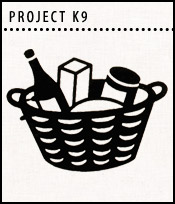
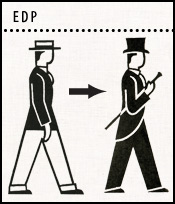

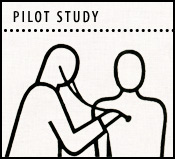
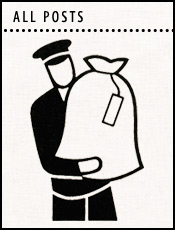
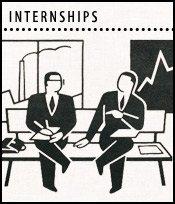




Comments
AWESOME POST!!! You guys are amazing! You are experiencing some truly world changing events!
and I LOVE “Adventure Capitalist”, brilliant!!! That should go on your business cards! 🙂